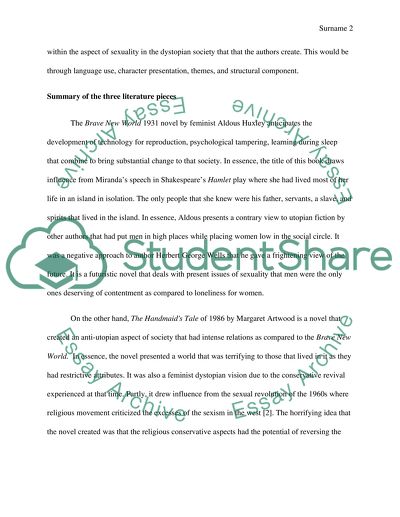Cite this document
(“Dystopian fictions and feminism. The Brave New World, The Handmaids Coursework”, n.d.)
Retrieved from https://studentshare.org/literature/1404518-dystopian-fictions-and-feminism-the-brave-new-world-the-handmaids-tale-and-the-wastelands-novel
Retrieved from https://studentshare.org/literature/1404518-dystopian-fictions-and-feminism-the-brave-new-world-the-handmaids-tale-and-the-wastelands-novel
(Dystopian Fictions and Feminism. The Brave New World, The Handmaids Coursework)
https://studentshare.org/literature/1404518-dystopian-fictions-and-feminism-the-brave-new-world-the-handmaids-tale-and-the-wastelands-novel.
https://studentshare.org/literature/1404518-dystopian-fictions-and-feminism-the-brave-new-world-the-handmaids-tale-and-the-wastelands-novel.
“Dystopian Fictions and Feminism. The Brave New World, The Handmaids Coursework”, n.d. https://studentshare.org/literature/1404518-dystopian-fictions-and-feminism-the-brave-new-world-the-handmaids-tale-and-the-wastelands-novel.


